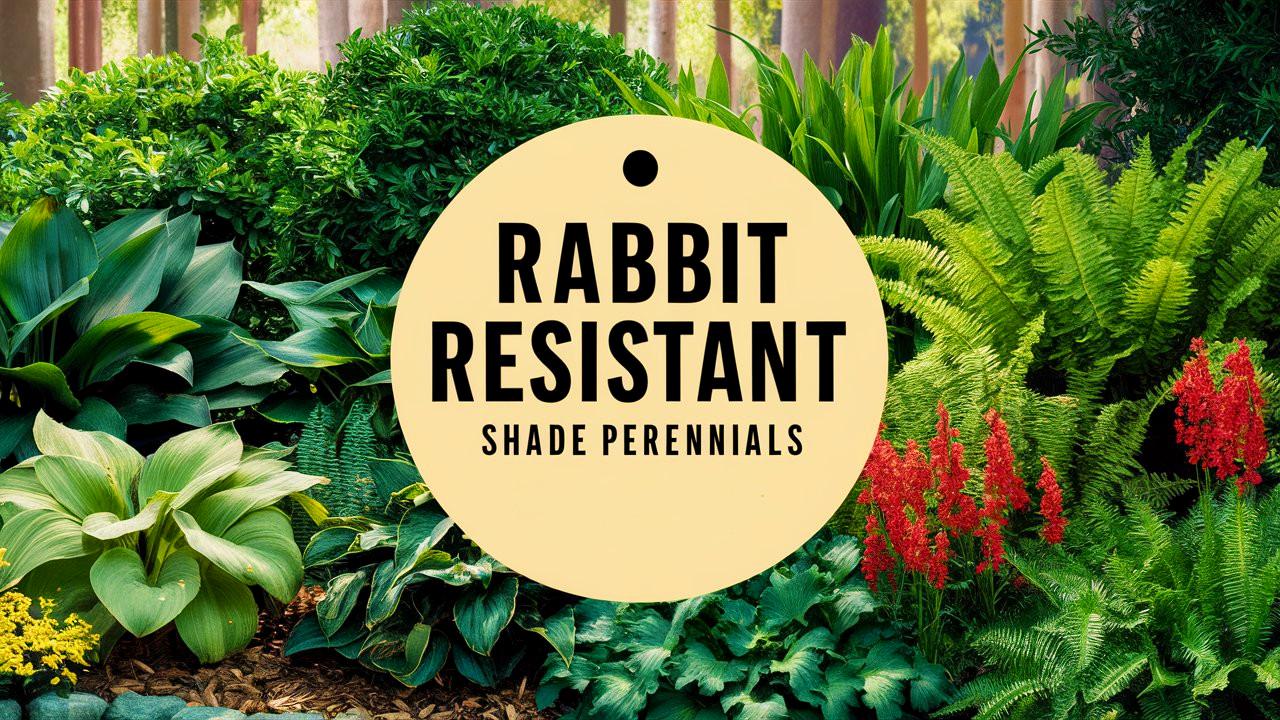Gardening can be an enjoyable endeavor, but for many gardeners, rabbits often pose a significant challenge. These agile creatures are notorious for munching on various plants, leaving devastation in their wake. However, there is hope! Many beautiful perennials thrive in shaded areas and are naturally resistant to rabbits.
This guide will explore a comprehensive list of rabbit-resistant shade perennials that can not only withstand nibbling but also bloom and flourish, offering delightful aesthetics to your garden.
Astilbe
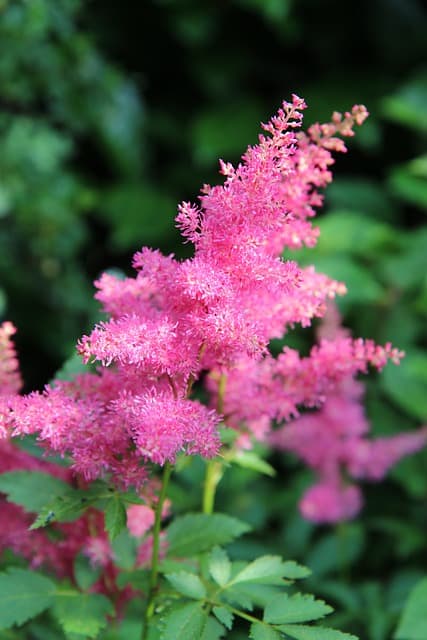
Astilbe, commonly known as false spirea, is a perennial that adds a feathery, plume-like texture to shaded gardens. It thrives in moist, well-drained soil and produces attractive flowers in shades of pink, red, and white that resemble fluffy pom-poms. The plant can grow from 1 to 3 feet tall and typically blooms from late spring to early summer.
Beyond its visual charm, Astilbe’s foliage is lush and fern-like, creating an attractive backdrop for other plants. Moreover, its resistance to rabbit grazing makes it an excellent choice for gardens frequented by these furry pests. Astilbe prefers partial to full shade, making it perfect for woodland gardens or shaded corners of a yard. To ensure healthy growth, regular watering is essential, especially during dry spells.
Bleeding Heart
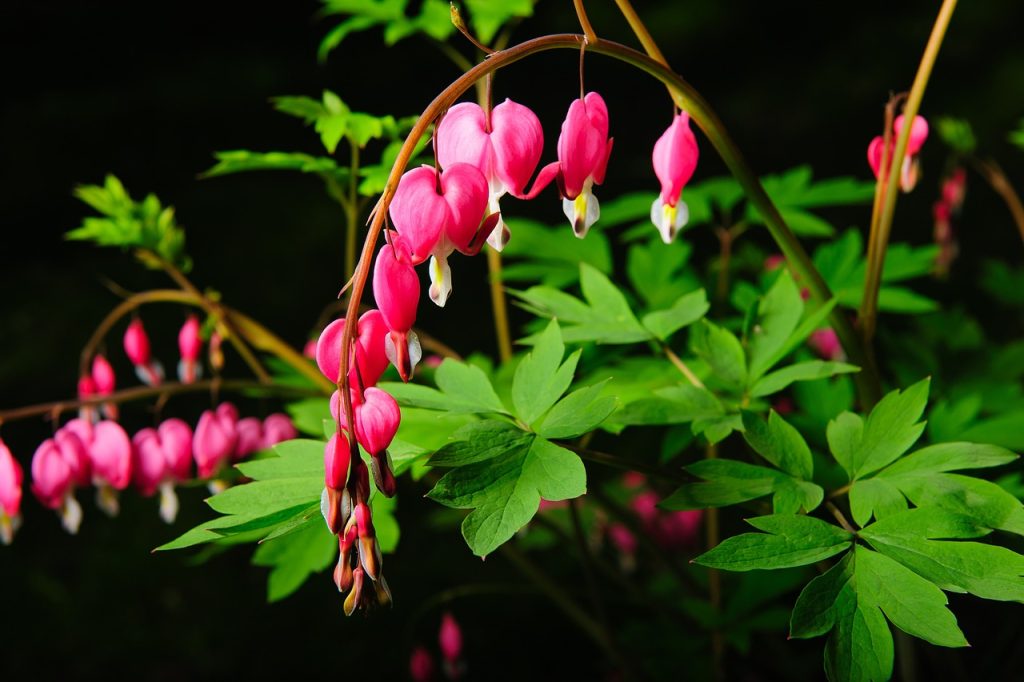
Bleeding Heart (Dicentra spectabilis) is a perennial that captures attention with its unique heart-shaped flowers. Blooming in late spring to early summer, these delicate pink or white flowers dangle gracefully from arching stems, evoking a sense of romance in the garden. The foliage is equally appealing, adding lush greenery that can reach up to 3 feet tall.
This perennial thrives in moist, well-drained soil and partial to full shade, making it ideal for dappled light gardens. While rabbits may venture into flowerbeds, they usually bypass Bleeding Heart. Its growth habit means that it can often fill in spaces left by rudely removed plants, making it a resilient choice in struggling gardens. However, ensure the plant has adequate moisture, as it can wilt during dry periods.
Ferns
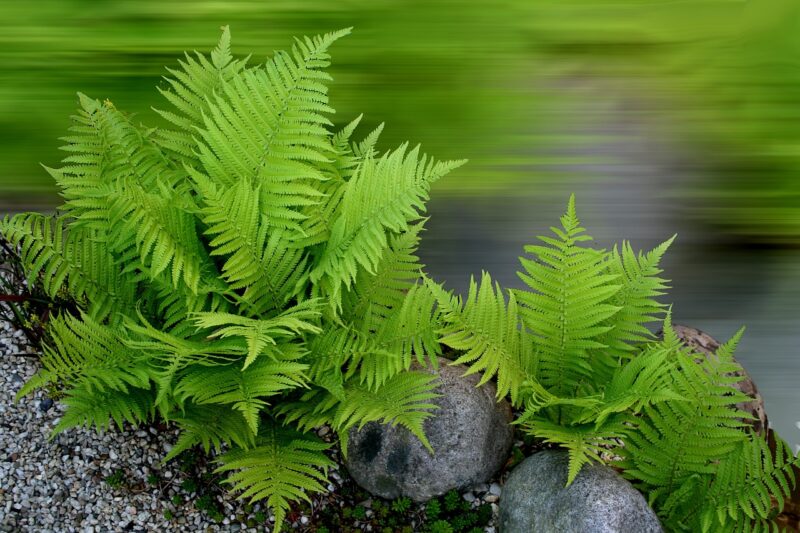
Ferns are a diverse group of plants that thrive in shaded, humid environments. Species such as the Lady Fern (Athyrium filix-femina) and Ostrich Fern (Matteuccia struthiopteris) are particularly well-suited to offering a lush, green backdrop in shadier spots of your garden. They perform well in rich, moist soil and often prefer acidic conditions.
What makes ferns especially appealing is their minimal maintenance requirements and their ability to suppress weeds in shaded areas. Rabbits tend to avoid them, as their finely divided leaves don’t resemble the tasty garden greens they typically seek out. Their sprawling foliage can create a rich tapestry of greens, while some, like the Japanese painted fern, even boast silvery hues that add intrigue and depth to a garden setting.
Coral Bells
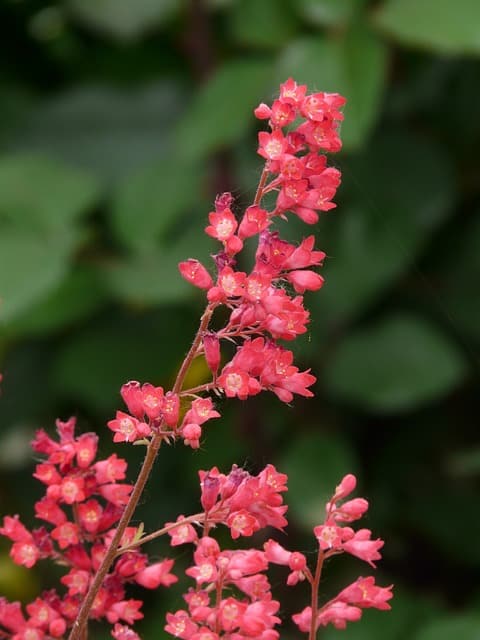
Coral Bells (Heuchera) are popular for both their colorful foliage and their resilience in shaded areas. This perennial comes in a variety of leaf colors, including deep burgundy, bright lime, and soft peach, creating a stunning palette even in low-light conditions. Some varieties also produce delicate flower spikes that attract bees and butterflies in the summer.
Coral Bells thrive in well-drained soil with a bit of organic matter and prefer partial to full shade. They can tolerate different soil types, making them adaptable to various garden conditions. Its unique leaf shapes and colors can serve as a focal point in your shade garden. They are also largely ignored by rabbits, giving you the peace of mind to focus on the beauty of your landscape rather than protecting your plants.
Japanese Forest Grass
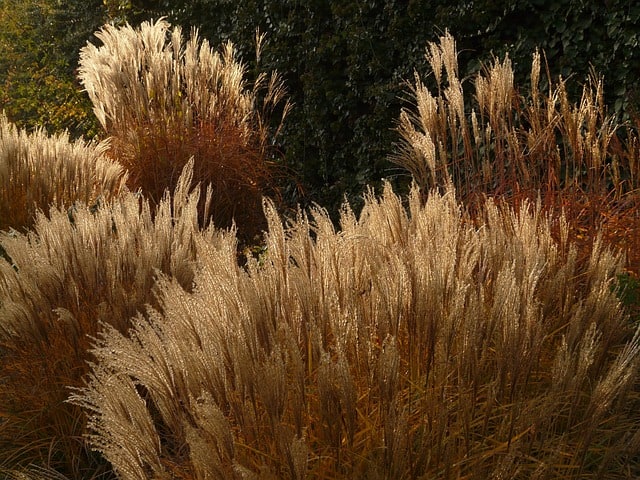
Japanese Forest Grass (Hakonechloa macra) is a charming, ornamental grass that thrives in shade. Its graceful arching habit creates a flowing, elegant look, making it ideal for borders or as a ground cover in shady spots. The green leaves can also display beautiful golden and variegated forms, providing texture and visual appeal throughout the growing season.
This grass does well in moist, fertile soil and prefers shade or partial sun. It’s also tolerant of dry conditions once established, making it low-maintenance and resilient. Rabbits typically avoid grazing on this ornamental grass, allowing it to thrive unbothered. Japanese Forest Grass can also help stabilize soil and prevent erosion, making it an excellent choice for sloped areas.
Toad Lily
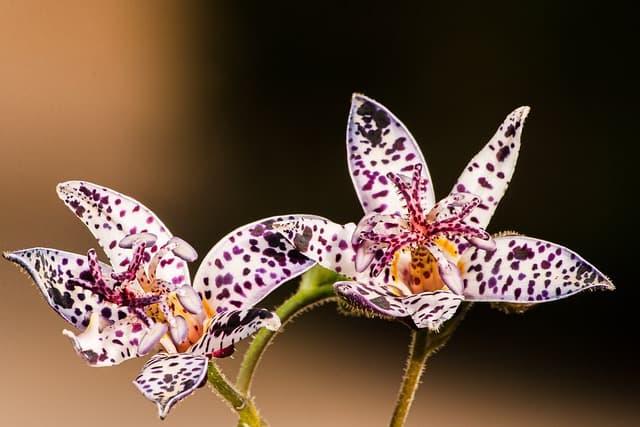
Toad Lily (Tricyrtis) is a unique and exotic-looking perennial that flourishes in shady environments. With its orchid-like flowers, which can be purple, white, or yellow with mottled spots, this plant intrigues both gardeners and pollinators alike. Blooming from late summer to early fall, Toad Lilies extend the flowering season in shaded areas, providing vital color when most garden blooms are fading.
Toad Lilies prefer well-draining, moist soil and thrive in full shade to partial sun. Their ability to adapt to wetter areas makes them a great choice for shady spots near ponds or water features. The plant’s growth habit also means rabbits shy away from its foliage, ensuring that it can flourish without interference. As an added bonus, Toad Lilies are often resistant to deer as well.
Solomon’s Seal
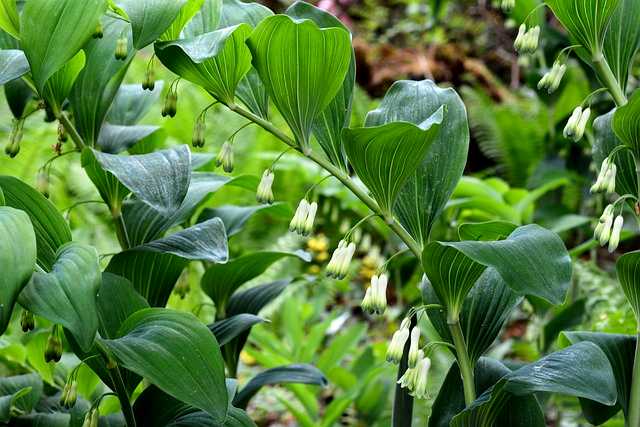
Solomon’s Seal (Polygonatum) is a perennial noted for its elegant arching stems and distinctive flowers. The plant produces white, bell-shaped flowers that droop gracefully beneath the foliage, creating a genteel beauty in shade gardens. Solomon’s Seal forms lush colonies that can fill spaces effectively.
Preferring moist, well-drained soil in partial to full shade, this perennial is relatively easy to grow and maintain. Its structure adds vertical interest and dimension to a shady landscape. Although rabbits may nibble on other tender shoots, they tend to leave Solomon’s Seal alone, allowing it to thrive amid the shadows. Furthermore, its foliage provides excellent ground cover, which can help suppress weeds.
Tickseed
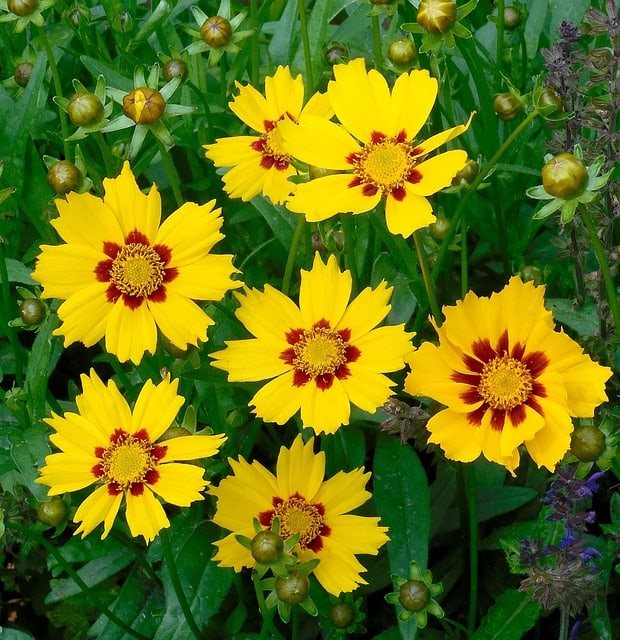
Tickseed (Coreopsis), particularly the varieties that thrive in shade, such as Coreopsis verticillata, is an often overlooked perennial with bright, cheerful flowers. With brilliant yellow blooms that attract pollinators, this plant can add a burst of sunshine to shaded areas. Tickseed typically blooms from early summer to fall, and its flowers can be single or double, depending on the hybrid.
While many species prefer full sun, certain tickseed varieties can adapt to partial shade, particularly in regions with hot summers. They prefer well-drained soil and can endure dry conditions, making them an excellent choice for low-maintenance gardens. Unlike many other blossoms that rabbits find irresistible, tickseed’s sturdy leaves and stems make it less appealing, making it an ideal choice for rabbit-prone areas.
Lungwort
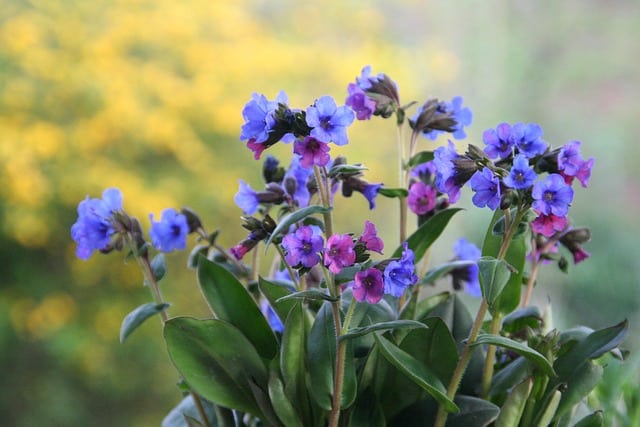
Lungwort (Pulmonaria) is celebrated for its spotted leaves and early spring flowers that range from blue to pink, providing a soft palette of colors in the shaded garden. Beyond its aesthetic appeal, the plant is fantastic for attracting early pollinators as it blooms from March through May, filling the garden with much-needed sustenance after winter.
This perennial thrives in rich, moist soil and prefers partial to full shade, making it perfect for woodland gardens and under trees. Its habit of forming clumps allows it to serve as effective ground cover, suppressing weeds. Moreover, lungwort’s toughness and unpalatability to rabbits make it a reliable addition to any landscape challenge faced with hungry hares.
Columbine
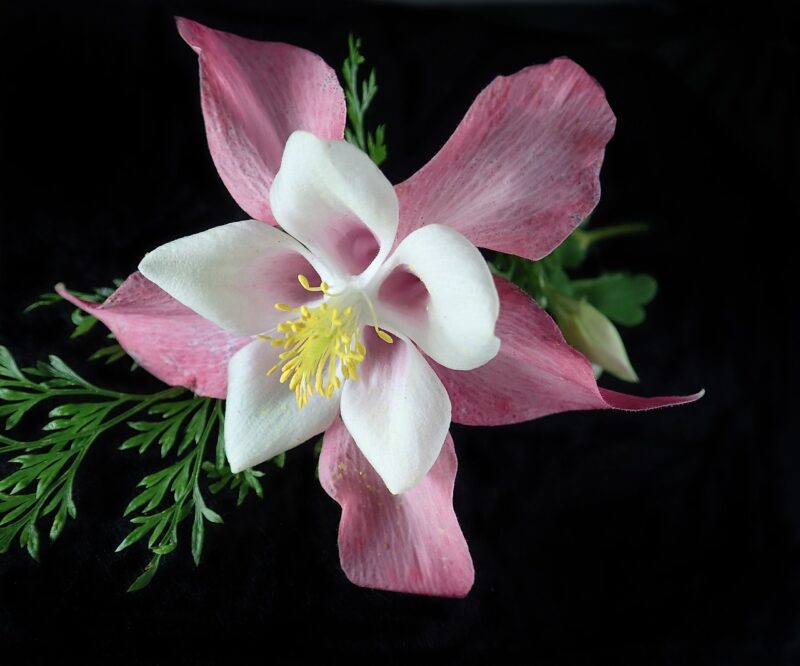
Columbine (Aquilegia) is a charming perennial that adds a whimsical touch to shady gardens. The enchanting bell-shaped flowers, often multicolored, bloom in late spring and early summer, creating a botanical spectacle. Columbine is known for its adaptability, thriving in various environments, including shaded spaces.
Although Columbine appreciates some sunlight, it can effectively grow in partial shade. The plant is relatively drought-tolerant once established, making it matchless for busy gardeners seeking low-maintenance options. Rabbit resistance is another notable trait, as they tend to avoid the plant, preferring tender greens instead. Moreover, its unique flowers attract hummingbirds and butterflies, enhancing the liveliness of your garden.
Hellebore
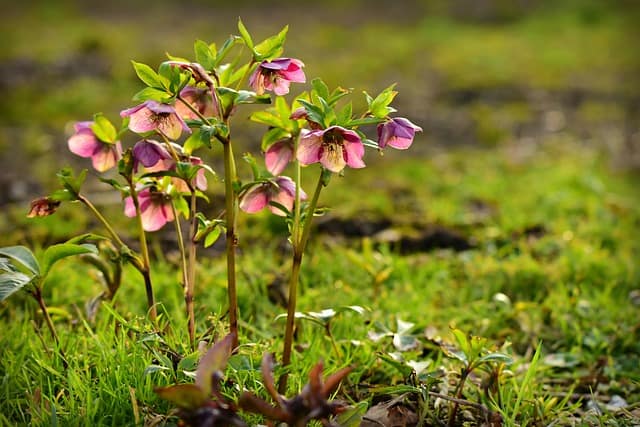
Hellebore, often referred to as Christmas or Lenten rose, is a perennial that blooms in late winter to early spring, providing a welcome burst of color when few other plants are flowering. The flowers, which can be white, pink, deep purple, or mottled, form in clusters and last for several weeks, making them a highlight of the shaded garden.
Hellebore prefers well-drained soil and can thrive in full to partial shade, creating lush foliage that complements the flowering period. Its evergreen leaves add texture and richness to winter gardens as well. Notably, rabbits typically shy away from this plant due to its thick, leathery leaves. Hellebore’s ability to tolerate colder temperatures and its pest resistance make it an enduring choice for shaded gardens in a range of climates.
Golden Shrimp Plant
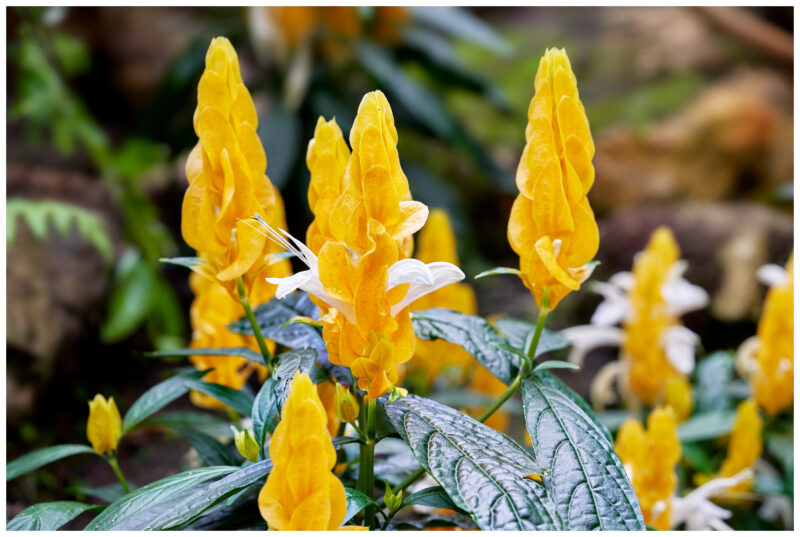
The Golden Shrimp Plant (Pachystachys lutea) is a tropical perennial known for its distinctive upright yellow inflorescences that resemble shrimp. This plant does well in partial shade and can brighten up a dim corner of the garden with its vibrant blooms from summer through fall. The green leaves create a bushy, lush backdrop that enhances the floral display.
Golden Shrimp Plant prefers rich, well-drained soil with consistent moisture, making it an eye-catching addition to shaded landscapes. While rabbits typically do not find this perennial appealing, it can also attract pollinators, adding beauty and function to your garden. Given its tropical origins, it can create a unique tropical aesthetic in your garden, especially when combined with other shade-loving plants.
Hummingbird Sage
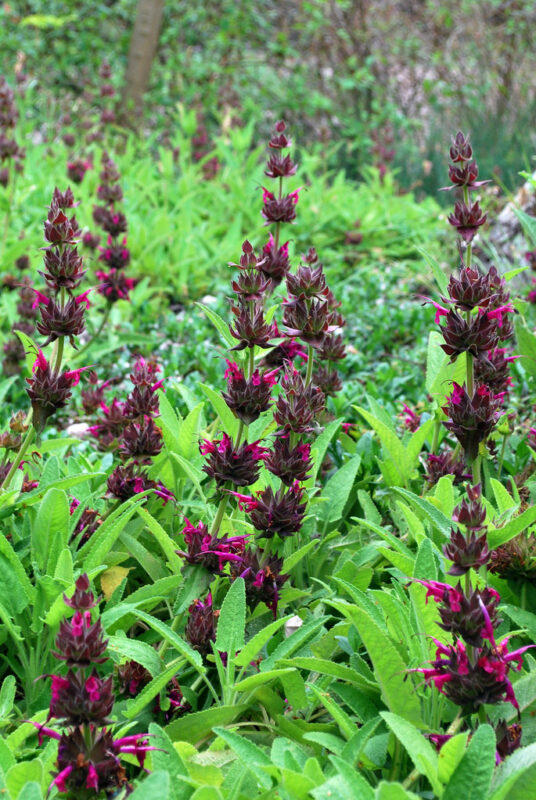
Hummingbird Sage (Salvia spathacea) captivates the senses with its lush purple flowers and aromatic foliage. Blooming from late spring to early summer, it serves as a magnet for hummingbirds and butterflies. This perennial thrives in partial shade to full shade and prefers well-drained, sandy soils.
As a drought-tolerant option once established, Hummingbird Sage is relatively low-maintenance, allowing gardeners to dedicate more time to enjoying their garden rather than extensive upkeep. Its distinctive fragrance helps keep rabbits away, making it another captivating yet resilient addition to shade-loving collections. The combination of low maintenance and vibrant blooms ensures this plant will be a centerpiece in your garden.
Wild Ginger
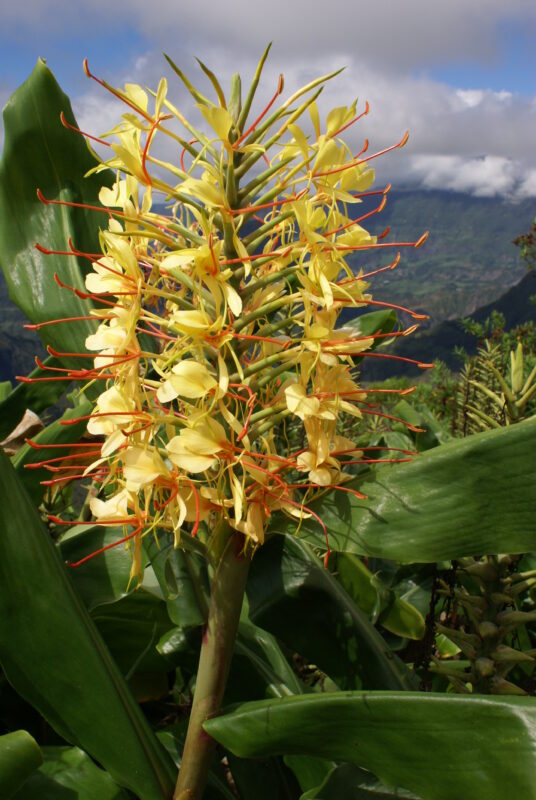
Wild Ginger (Asarum canadense) is a unique perennial that often serves as ground cover in shaded environments. Its heart-shaped leaves and hidden, bell-shaped flowers that emerge in spring make it both subdued yet intriguing. Wild Ginger thrives in rich, moist soil and is ideal for woodland settings.
This perennial is valued for its ability to spread and form dense mats, effectively suppressing weeds in the process. Additionally, rabbits tend to ignore this plant, making it a suitable choice for gardens with frequent rabbit visitors. The combination of wildlife-friendly properties, charming foliage, and low maintenance makes Wild Ginger a superb choice for shaded gardens.
Ajuga
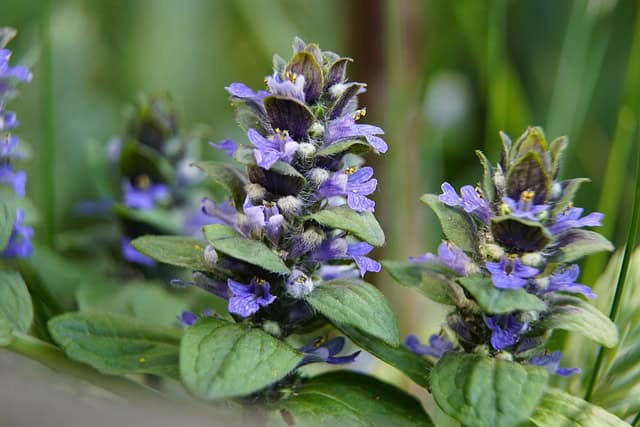
Ajuga, commonly known as Bugleweed, is a versatile ground cover perennial that flourishes in shady areas. The vivid blue flowers that appear in spring create a dramatic display, especially when set against its evergreen foliage. Ajuga is an adaptable plant that thrives in various conditions, including dry and moist soils.
Particularly valued for its ability to stabilize soil and prevent erosion, Ajuga spreads quickly and helps reduce weeds in shaded regions. Its taste is typically unappealing to rabbits, making it an excellent frontline defense in any rabbit development-prone area. This durable plant’s vibrant blooms and hearty growth habit can create an attractive carpet in underutilized areas of your landscape.
Spiderwort
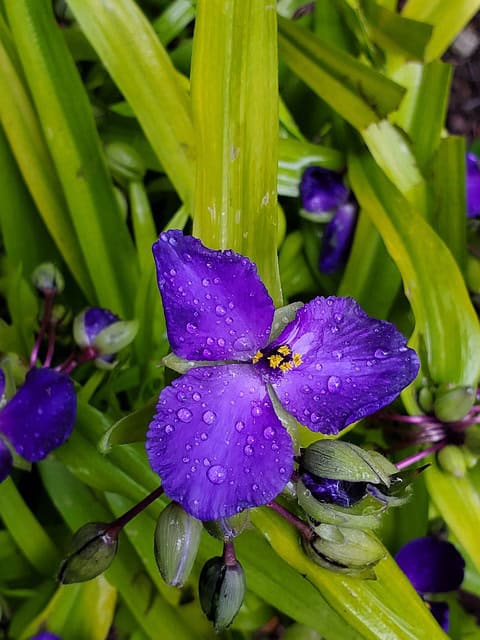
Spiderwort (Tradescantia) is an adaptable perennial that exudes a casual charm with its arching leaves and colorful flowers. Blooming in clusters of purple, blue, or white, Spiderwort provides delightful bursts of color during late spring and early summer. This plant thrives in damp, well-drained soil, and prefers partial shade.
Spiderwort’s resilience and prevalence in various garden types make it a standout choice for shaded spots. Additionally, its robust leaves make it less appealing to rabbits, preserving its delightful blooms for human admiration. This hardy perennial has a self-seeding habit, which means it will continue to spread, filling your garden with beauty year after year.
Foxglove
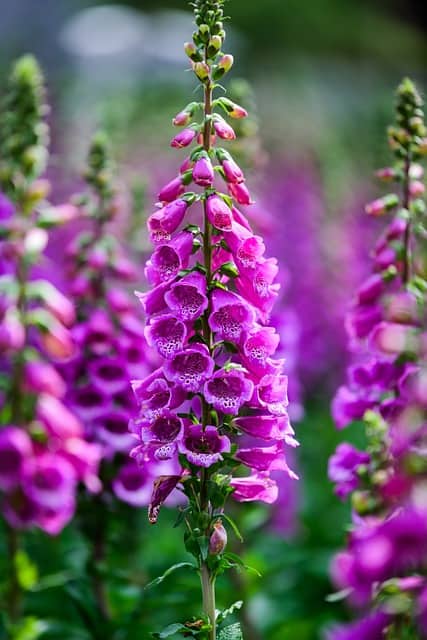
Foxglove (Digitalis purpurea) is a striking biennial or short-lived perennial that lends elegance to shaded settings with its tall, tubular blossoms. These blooms, which can range from white to assorted shades of purple and pink, attract various pollinators, enhancing the ecosystem within the garden. Foxgloves prefer well-drained, fertile soil and thrive in partial shade.
Rabbits typically avoid Foxglove due to its toxicity; thus, it can remain undisturbed in the garden. However, gardeners should ensure to plant it safely away from areas frequented by pets or children. This plant can reach a height of 3 to 5 feet, making it an excellent choice for creating vertical interest in shaded woodland environments.
Snakeroot
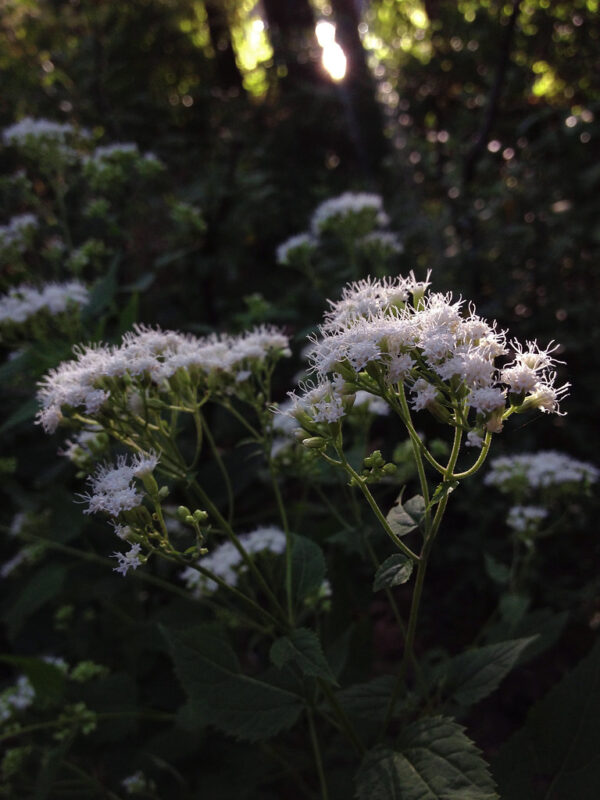
Snakeroot (Ageratina altissima) is a charming perennial that thrives in shady areas, producing fluffy white clusters of flowers in late summer and fall. This plant prefers rich, moist soil and is often found in woodland gardens. Snakeroot is great for providing texture against other perennials and can grow between 2 to 4 feet tall.
Known for attracting butterflies and providing late-season nectar, it’s an excellent choice for encouraging pollinators, while its toughness makes it less appealing to rabbits. The foliage can serve as a lush underlayer in any shaded area, creating a diverse plant ecosystem while remaining resilient against unwanted nibblers.
Wintergreen
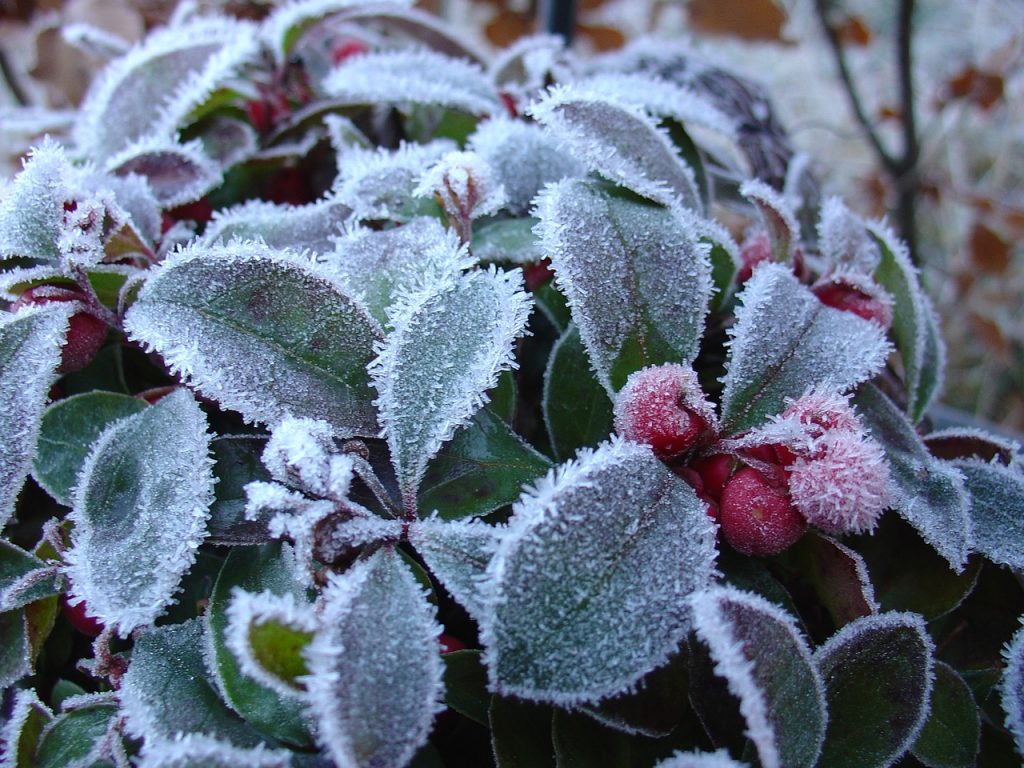
Wintergreen (Gaultheria procumbens) is a delightful evergreen ground cover that thrives in shaded habitats. It features shiny, aromatic foliage that delights the senses and produces white flowers in spring, leading to bright red berries that persist into winter. This ground-hugging perennial prefers acidic, well-draining soil and partial to full shade.
Rabbits tend to shy away from this hardy and fragrant plant, typically favoring more delicate foliage instead. Its ability to provide year-round interest and its unique flavor make Wintergreen a valuable addition to your shaded garden. In addition, the berries add an enticing burst of color during the winter months when most plants are dormant.
Brunnera
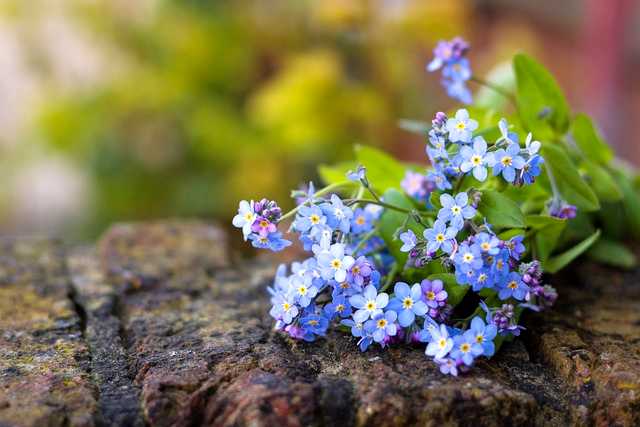
Brunnera, commonly known as Siberian Bugloss, is a stunning shade-loving perennial with heart-shaped leaves and airy blue flowers reminiscent of forget-me-nots. Blooming in spring, Brunnera offers delightful patches of cheerful blue in shady spots. The foliage is striking on its own, often with attractive variegation.
This perennial thrives in moist, well-drained soils, creating lush coverage in a woodland garden. Its unpalatability to rabbits ensures that it can thrive undisturbed, adding charm and character to your garden. The dense foliage forms effective ground cover, suppressing weeds and enriching the soil as it matures, making Brunnera a perennial choice for shade.
Lamium (Dead Nettles)
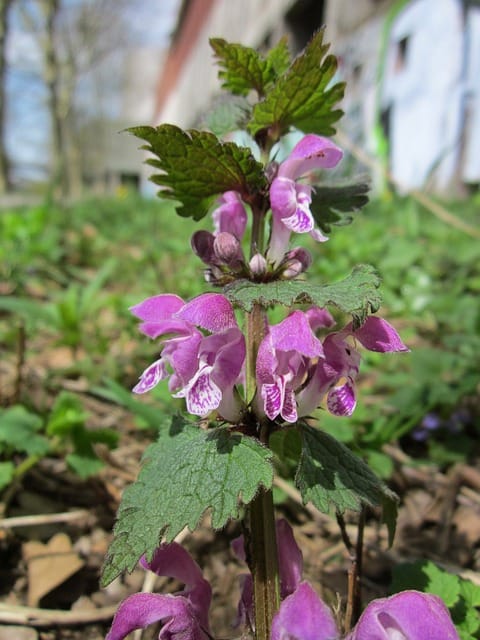
Lamium, commonly referred to as Dead Nettles, is a hardy ground cover perennial that thrives in shade. With attractive foliage that can be solid green, silvery, or variegated, along with delicate purple or white flowers appearing in spring, Lamium adds both beauty and functionality to shaded spaces.
It prefers well-draining soil and can tolerate poor conditions while providing valuable erosion control on slopes. This perennial is generally avoided by rabbits due to its coarse foliage, making it another steadfast option for gardeners combatting their munching habits. Lamium can spread significantly, providing quick coverage and a stunning visual display in gardens.
Epimedium
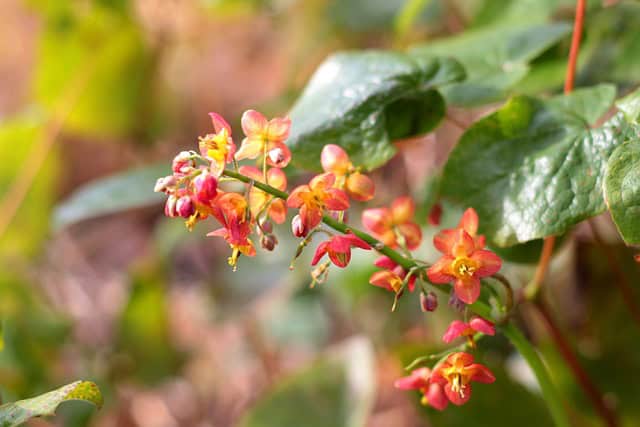
Epimedium, or Barrenwort, is a shade-loving perennial known for its delicate, butterfly-like flowers that bloom in spring. Available in various colors, the blooms are often borne above the foliage, creating a stunning visual display. Epimedium thrives in well-drained, moist soil and provides excellent ground cover in shaded areas.
This perennial’s unique foliage comes in different shapes and colors, adding year-round interest. Epimedium is also avoided by rabbits due to its coarse texture, allowing it to flourish. Its versatility and resilience against garden pests make it a commendable choice for shaded landscapes that need a splash of color and ground coverage.
Conclusion
Selecting rabbit-resistant shade perennials is a smart and rewarding strategy for any gardener dealing with pesky rabbits. The plants outlined above not only adapt well to shady environments but also add depth, texture, and a variety of colors to the garden.


